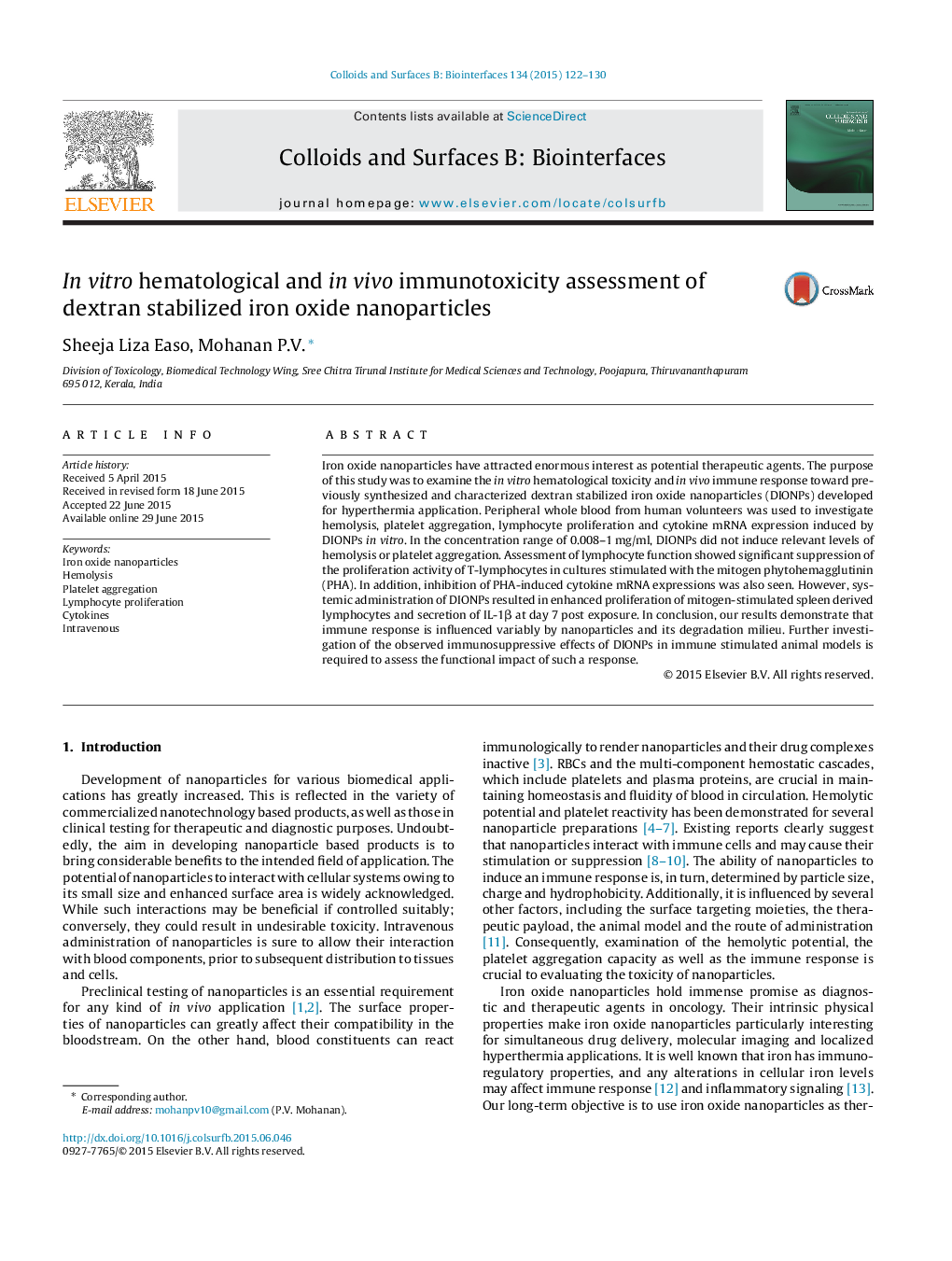| Article ID | Journal | Published Year | Pages | File Type |
|---|---|---|---|---|
| 599368 | Colloids and Surfaces B: Biointerfaces | 2015 | 9 Pages |
•DIONPs had no relevant effect on hemolysis or platelet aggregation.•Suppression of PHA stimulated T-lymphocyte proliferation was observed.•DIONPs affected mitogen induced cytokine expression in T-lymphocytes.•Enhanced proliferation of mitogen stimulated spleen lymphocytes was seen at day 7.•Secretion of IL-1β in serum was increased at day 7.
Iron oxide nanoparticles have attracted enormous interest as potential therapeutic agents. The purpose of this study was to examine the in vitro hematological toxicity and in vivo immune response toward previously synthesized and characterized dextran stabilized iron oxide nanoparticles (DIONPs) developed for hyperthermia application. Peripheral whole blood from human volunteers was used to investigate hemolysis, platelet aggregation, lymphocyte proliferation and cytokine mRNA expression induced by DIONPs in vitro. In the concentration range of 0.008–1 mg/ml, DIONPs did not induce relevant levels of hemolysis or platelet aggregation. Assessment of lymphocyte function showed significant suppression of the proliferation activity of T-lymphocytes in cultures stimulated with the mitogen phytohemagglutinin (PHA). In addition, inhibition of PHA-induced cytokine mRNA expressions was also seen. However, systemic administration of DIONPs resulted in enhanced proliferation of mitogen-stimulated spleen derived lymphocytes and secretion of IL-1β at day 7 post exposure. In conclusion, our results demonstrate that immune response is influenced variably by nanoparticles and its degradation milieu. Further investigation of the observed immunosuppressive effects of DIONPs in immune stimulated animal models is required to assess the functional impact of such a response.
Graphical abstractHematological and immunotoxicity of DIONPs.Figure optionsDownload full-size imageDownload as PowerPoint slide
